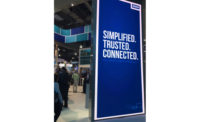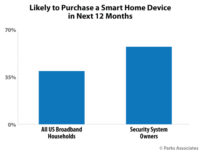Bosch Building Technologies has developed a smart software solution designed to assist systems integrators and installers: the Project Assistant app. Until now, the planning, configuration, installation and reporting of a video security project involved many different tools and extensive man hours to complete and document the process, making it difficult for systems integrators to manage and keep track of various projects during each phase through to the final reporting. With the Project Assistant app, control, transparency and efficiency can be applied to every part of a video security project.
Every video security project involves setup of secure passwords for cameras, the assignment of IP addresses, the pre-configuration of the cameras, installation and configuration on-site, and delivering proof of the installation to the end customer. So it is natural that, despite the best intentions, errors, damages and poor communication during the process add time and costs to a project, and can have an adverse effect on clients’ satisfaction.
Now, project set-up and pre-configuration (commissioning) can start in the office even without the physical camera. With only the project plans, a set of IP addresses and selected passwords from the client, the systems integrator can create a new project by entering all details directly into the app, or uploading it via an Excel-compatible file format. Inputting the password and network IP addresses can be done per camera or, with the help of the app, for multiple cameras at once by setting the password and a range of IP addresses for the entire project. The Project Assistant automatically enters the information for each camera in the project, which is a helpful time-saving feature. Further information like camera name and location can also be added via the Project Assistant app without the need for the cameras to be physically present. Creating a set of virtual cameras within the app eliminates the need for unboxing and re-boxing of products for labelling and pre-configuration in the systems integrator’s office and has been found to deliver significant time savings of up to 30 percent.
Once the cameras are physically installed on-site and connected to a network, the Project Assistant needs to be connected to the same network (via Wi-Fi or cable). When connected, the cameras are ready to be matched to the virtual cameras set up in the app. By simply scanning QR codes from the camera box, on the outside of the Bosch camera, or the sticker sheet inside the box, the MAC address of the camera is identified and the camera is assigned to a specific virtual camera in the app. Pre-defined settings already set up in the Project Assistant app are directly written to the camera. After uploading the pre-defined settings, the integrator can set up the field of view, adjust image sharpness and apply additional settings if required.
The Project Assistant app makes final reporting easier too, by making it possible for every camera in the project to be contacted, checked and reported in a matter of seconds, then deliver a final client-ready report minutes later, complete with field of view snapshots. The various projects set up in the Project Assistant app can be shared via the cloud across multiple stakeholders, giving each one the opportunity to access a clear, detailed overview of the status at any time during the project, so it is extremely transparent.
The app is available to download for free from various App stores for installation on desktop, tablet and smartphone devices, and works on Apple, Windows and Google platforms.
Visit www.boschsecurity.com/xn/en/products/video-systems/solutions/project-assistant









